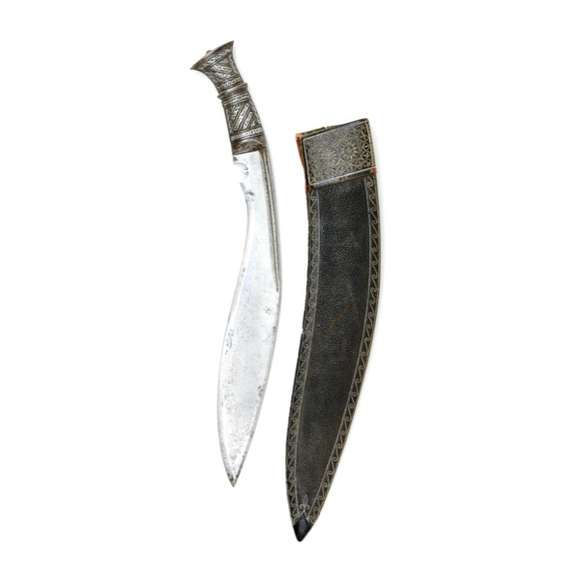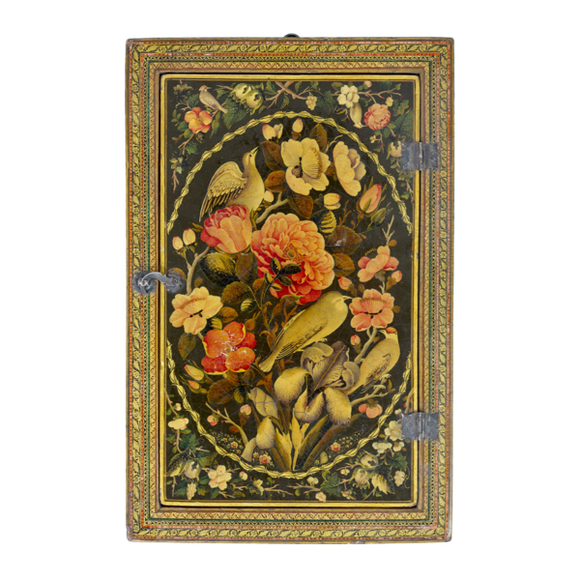An understated, elegant khukuri of substantial proportions with fine layered blade.

Sheathed 28.3 cm
Knife 25 cm
12.9 cm
Base 3.5 mm
Base 19 mm
Sheathed 77 grams
Knife 44 grams
Iron, wood, cherry bark
Ainu people
Chitose or Biratori, Hokkaido
19th century
Introduction
The Ainu people were the earliest settlers of Hokkaido, the northernmost island of the Japanese archipelago, and are considered the indigenous people of this area. Their culture is very much their own, although they have taken elements from neighboring cultures in their local arts and crafts.
The Ainu men traditionally carried a utility knife called makiri that was used for woodcarving and for cutting food. Women carried a slightly smaller version called menoko-makiri which they used for food, and gathering fruits and bark.

Ainu hunters. The one on the left carrying his makiri.
19th century painting. Anonymous.
Brooklyn Museum accession number X1085.
On makiri knives the handle and blade both follow the same curve, with the knife's edge being on the outside of the curve. The edges have a single bevel, on the right side. In regards to their use:
"The knife In cutting is frequently, perhaps generally, drawn toward the cutter."
-Frederick Starr; The Ainu group at the Saint Louis exposition.
Chicago, The Open Court Publishing Company, 1904. Page 106.
This example
An interesting variation of the Ainu makiri. It has the typical single-edged blade with an edge bevel only on the right side. at the base of the blade is a maker's mark "常" pronounced Tsune in Japanese, with a personal seal underneath it.
The hilt is made of a single piece of wood, carved with swirling designs and cartouches with crosshatching that are probably stylized fish scales.
The scabbard is made of two parts, which are held together by four sections of cherry bark wrapping. There is a hole cut at the bottom of the scabbard, probably so that dirt can come out.
Condition
Original condition throughout. No damage, no repairs. A tiny piece of bark wrapping missing at the suspension plate.
Comparable examples
John Andersen donated a similar scabbard to the British Museum in 1885. Accession number As1885,1219.15. It was from Chitose, Hokkaido.
Another similar piece is in the National Museums Scotland, donated by Isabella Bird in 1882. Accession number A.1882.22.5. Said to be from Biratori, Hokkaido.
Two other scabbards and a complete one were donated by Dr W. L. Hildburgh in 1944. The most close to ours of these is the scabbard under accession number As1944,09.7.













With iron, silver overlaid hilt. Its associated scabbard features fine quillwork.
This peculiar sword was used by the Garo people of Assam for fighting, clearing the jungle, and animal…
Made of pasteboard, finely lacquered with roses and nightengales.






